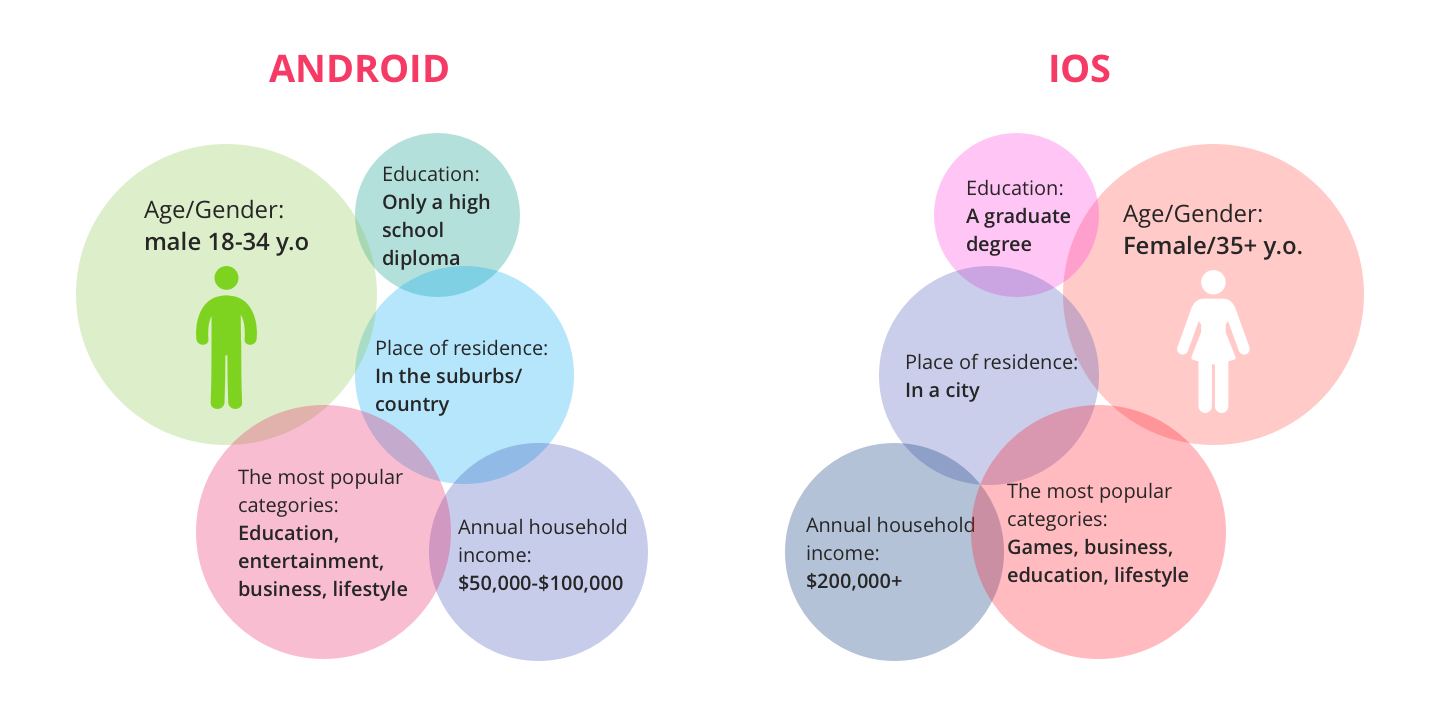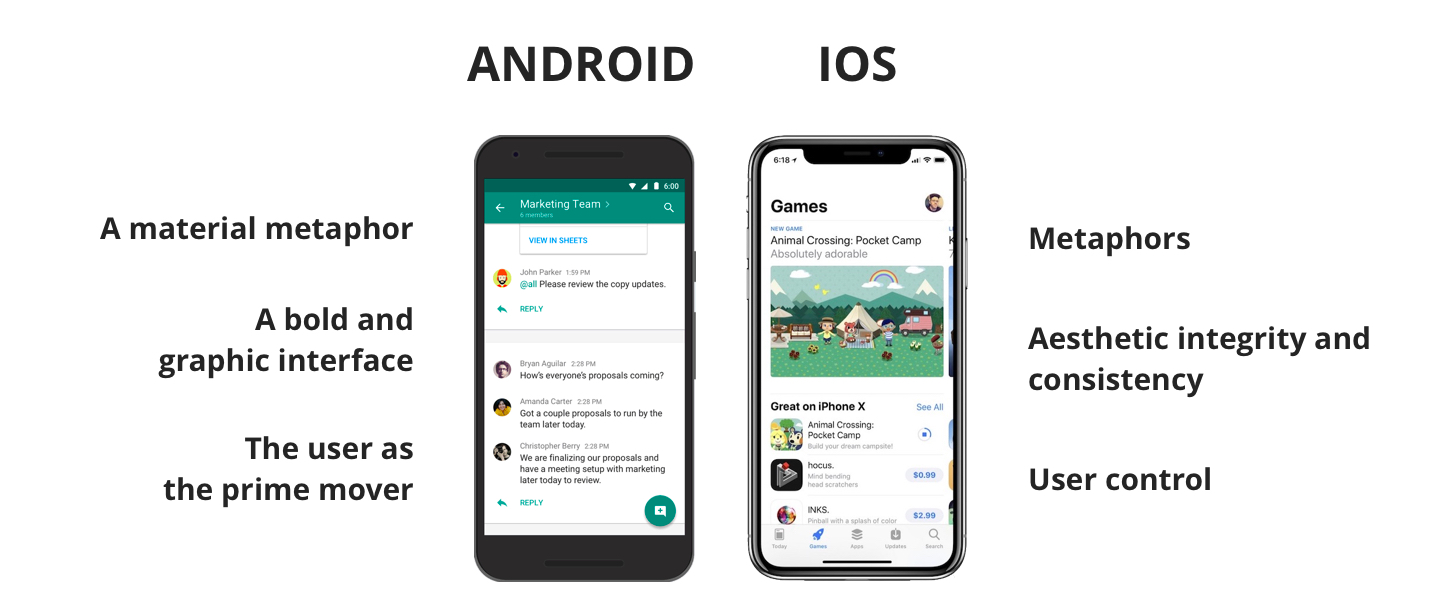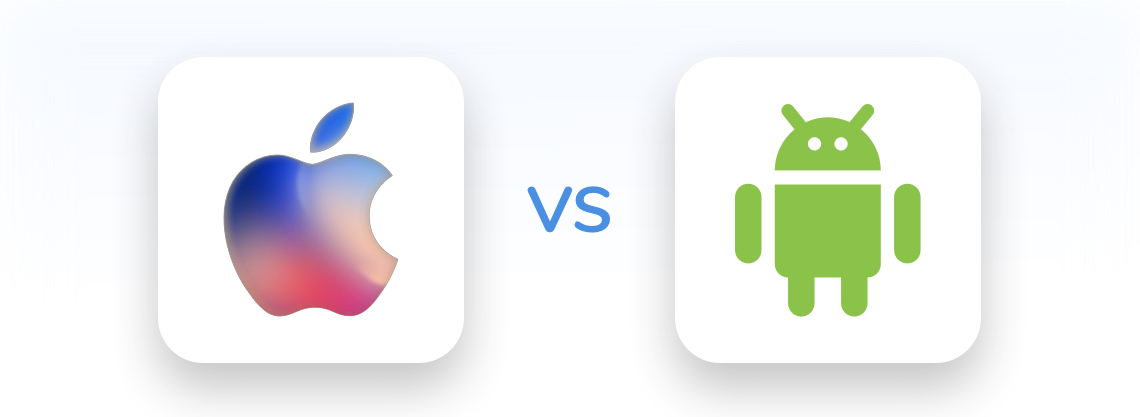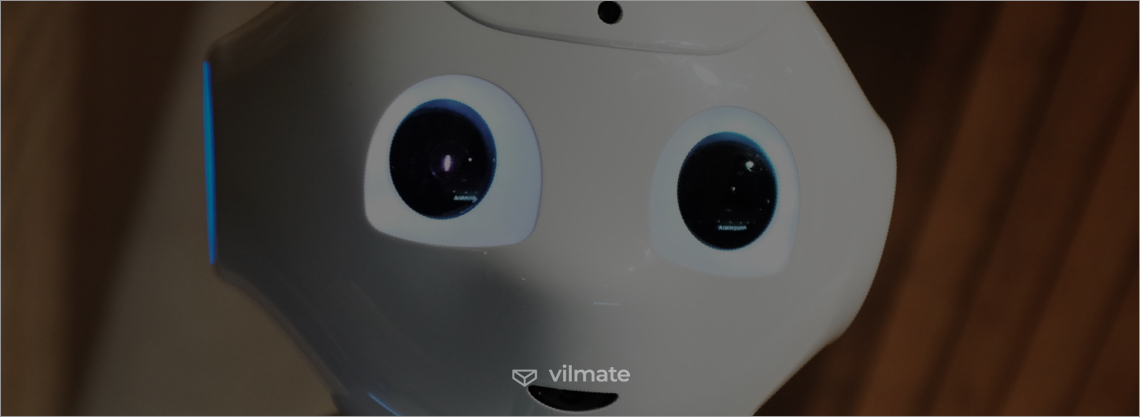Two main types of mobile operating systems are iOS and Android. Naturally, when it comes to choosing one of the two options, you may wonder what will work best for you and your company. In such a case, we can assure you that taking educated guesses is always preferable to the wild ones.
Coding Process
The development strategy is always determined by the specific objective of your business. Although the native approach can be a better choice, the cross-platform mobile development solutions are quite popular now due to the relative ease of their implementation (despite the fact that launching such applications is costly and risky.)
Each company that wants an app to be accessible on different devices has two options. It is either working to produce an app for a certain platform or building teams to create applications that work on more than one platform. The latter alternative is certainly more expensive than the former one. In this context, an effective solution which allows saving both time and effort is cross-platform development. It implies writing the source code once and implementing it on different platforms. Approaches common to this solution are Cross-Compilation, Virtual Machine approach, Component- and Cloud-Based approaches, and Model-Driven Development.
However, when considering the coding process for Android and iOS separately, we must admit that there are some key differences:
1. Programming languages
- Android Java/Kotlin
- iOS Swift
2. Integrated development environments (IDE)
- Android Android Studio
- iOS XCode
Besides, Android app development is generally recognized to take more code lines and is more expensive than the one of iOS. Bug fixing is also more difficult for the Android OS. There is, however, some good news. Although XCode as a development environment for iOS runs on Macs only, Android Studio can be installed both on PCs and Macs. As for the rest, to start developing for either of the OSs you need to ensure that a team has at hand all the necessary development tools of the chosen platform, one mobile device, and a tablet.
From the above, developers can choose one of the alternatives to lay a solid foundation for beginning the coding process. Firstly, they can benefit from the cross-platform mobile development and all its tools. Secondly, they can learn two programming languages, install two IDEs and two software development kits (SDKs) instead, which is a huge challenge.
Demographics
Good marketers should know perfectly well who their typical users are to have their product reach the target audience. It is widely believed that the user communities of Android and iOS differ from each other. Well, how to tell an iPhone person from an Android one? Hunch, a collective intelligence website, which is unfortunately not active now, has one day collected data on Android vs iOS demographics by putting 2,000 questions anyone could give answers to on the Web. The results obtained from a total of 80 million+ responses speak for themselves:
| Criterion | Android | iOS |
| 1. Age/Gender | Male/18-34 y.o. | Female/35+ y.o. |
| 2. Education | Only a high school diploma | A graduate degree |
| 3. Place of residence | In the suburbs/country | In a city |
| 4. Annual household income | $50,000-$100,000 | $ 200,000+ |
| 5. The most popular categories | Education, entertainment, business, lifestyle | Games, business, education, lifestyle |

Revenue Models
To pave the way to achieving user loyalty, a mobile app should be a sustainable source of revenue. Android is claimed to match the advertising goals, while iOS is to be used for driving sales efficiency. Understanding this clearly stated mobile marketing trend, developers can make wiser decisions as for allocating their resources.
Release Cycles
Apparently, app adoption differs for the two operating systems and Android, in this case, shall yield the palm to iOS. The reason is that updating an OS to the most recent version is more challenging for Android. Namely, approximately 95% of Apple users have their devices updated to iOS 10 or iOS 11, the most recent versions, now. Yet, less than 1% of Android devices are running Oreo, which is the latest version of this operating system.
Enterprise Apps
Not all apps are available for public download. It is enterprise apps that are created to be used by corporate employees exclusively. In the first place, they serve business purposes, and many companies take advantage of such applications running them either on Android or iOS devices. The key feature of these apps is their security, but which OS is more secure?
Neither of the OSs is, however, perfectly safe; they are more (Android) or less (iOS) vulnerable. The thing that makes a security difference is the way they are deployed and updated. Besides the fact that Android users are reluctant to have their phones running the latest OS version, the system itself suffers from adverse impacts of fragmentation, consequently, even a single enterprise can have several OS versions in use. Correspondingly, security issues are addressed across different OS versions. Nevertheless, iOS has a soft spot too. It is the locked nature that grants exclusively hierarchical fixes to the problems. With this, you may opt for either the OS designed by a monolithic company that aggressively handles security issues or the OS that pushes security patches quickly but might offer an extended release.
Development Cost
When it comes to development costs, you can be positive that they differ for the two OSs. Particularly, iOS app development is reputed to be 30% cheaper than the one of Android apps on average. The reason is that Android development is slower and here is why:
- 40% more lines of code
- Android emulators are slower
- effects of fragmentation
- verbosity and complexity of XML (compared to WYSIWYG)
At a rough estimate, simple Android application development should cost $25,000 to $35,000. However, this assumption does not restrict alleged development costs of an iOS app of the same complexity degree to about 20,000$; for even 3,000$ might do, and development costs will vary depending on the chosen business model, functionality, and design.
Design
The design rules for Android devices are based on Material Design Guidelines, while Apple relies on Human Interface Guidelines. Thus, we can single out the basic design principles for both OSs.
Android:
- A material metaphor. Conveyance of the way objects move, interact, and merely exist in space follows the realistic approach here.
- A bold and graphic interface. Responsive UI elements with their large-scale typography appear, hide and move in such a way that they all seem palpable.
- The user as the prime mover. Users can benefit from such UX elements as the Floating Action Button, splash screens, an app’s navigation design and adaptiveness. Still, the rules for navigation are loose enough to allow designers to apply different navigation patterns customizing the content.
iOS:
- Metaphors. In this regard, two OSs mirror each other, and we observe the same attention to detail.
- Aesthetic integrity and consistency. It implies that UI elements not only look ‘real’ and have a captivating appearance but also meet users’ expectations providing them with the styles they have got used to.
- User control. The user thus has the freedom not to do harmful actions. It may seem that the OS takes complete control over an individual but informing him or her about consequences of the choices made in a particular app the OS reduces possible risks while efficiently simplifying the navigation experience.

In view of the above, the design of Android appears to be very similar to the one of iOS as for the key principles, but it is the look and feel of the application that makes the difference between the app that just works and the one that has a definite wow effect on the user.
Publishing and Restrictions
Primarily, to submit an app, the developer must pay the registration fee:
- Android a one-time $25 registration fee
- iOS $99 per annum
Besides, mobile applications, as previously stated, are deployed and updated on the given operating systems following two different patterns. iOS and Android development difficulty is not all that is important. The binary opposition of open and closed nature of an operational system is essential here.
The Google Play Store ecosystem is noted for its openness. It implies that Android runs on more kinds of hardware than any other operating system and that any developer can easily publish his or her app on any store. iOS, in turn, applies limits to the applications which are about to be released. Consequently, apps are more frequently rejected by the App Store than by the Google Play Store, and the examination itself takes more time.
Conclusion
Obviously, we cannot say that an experience with either of the two operating systems is bound to be more enjoyable or successful, it all depends on what you expect and whether these expectations are true-to-life. On top of that, you should have a fair chance to succeed — no matter which OS you have opted for — once you have identified the objective of developing this app. Then, proceeding from the basic principles, we are sharing with you here, you can cream off all possible benefits.

(с) 2018, Vilmate LLC




